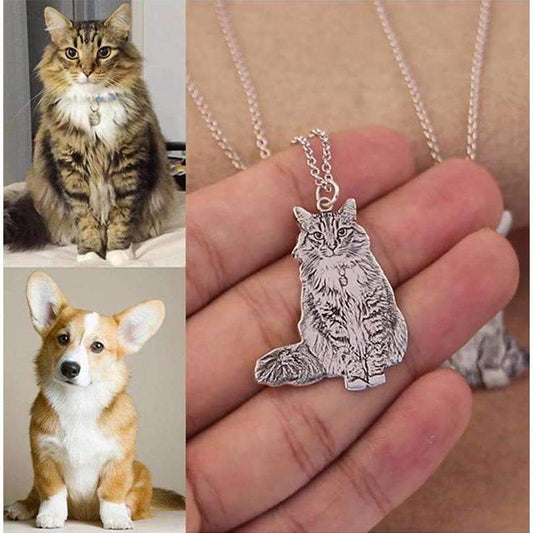Cats are complex creatures whose behavior is deeply rooted in their evolutionary history and cognitive abilities. Delving into the science of feline behavior not only satisfies our curiosity but also enhances the lives of both cats and their human companions. This article offers insights from feline science to help us decode their mysterious actions and strengthen the cat-human bond.
Key Takeaways
- Recognizing cat vocalizations and body language is essential for understanding their emotional state and intentions.
- Scent plays a significant role in how cats communicate with each other and mark their territory.
- Cats have complex social structures, and their interactions with humans can deeply affect their behavior and well-being.
- Feline cognitive abilities are remarkable, with cats capable of learning through observation and experience, which can be enhanced with proper training.
- Addressing behavioral issues in cats requires an understanding of their natural instincts and creating a stress-free environment tailored to their needs.
Decoding Feline Communication

Understanding Vocalizations and Body Language
Cats are masters of non-verbal communication, using a complex system of body language to express their feelings and intentions. Understanding cat language through body cues, vocalizations, and eye contact is key for cat owners. A cat's tail, for instance, can be a barometer of their mood: a high, quivering tail indicates excitement or happiness, while a tail tucked beneath the body suggests fear or submission.
Positive interactions with cats often involve a relaxed posture, erect ears, and pupils of a normal size. These cats may vocalize with purrs or trills, indicating a desire for social engagement. In contrast, a cat with flattened ears, dilated eyes, and a puffed-up tail is signaling distress or aggression. Recognizing these signs can prevent misunderstandings and strengthen the bond between cats and their humans.
Respect their needs and quirks, including the inevitable struggle with fur-covered clothing and furniture.
When it comes to veterinary visits or new environments, a cat's body language can become even more pronounced. A frightened cat may hiss, scream, or attempt to hide, while a confident cat might explore cautiously or seek affection. It's crucial to observe and respect these cues to ensure positive experiences and continued well-being.
The Role of Scent in Cat Communication
Cats utilize a complex system of scent marking to communicate with one another and interpret their environment. Scent marking serves as a feline bulletin board, conveying messages about territory, reproductive status, and individual identity. Cats have exceptional olfactory abilities, with 200 million scent receptors. They form strong bonds with owners through scent recognition, even detecting emotional cues. Studies show cats can identify owners' scents accurately, enhancing the feline-human relationship.
Cats' scent-marking behaviors include rubbing their face, which has scent glands, against objects or people, and scratching, which deposits scent from glands in their paws.
Understanding these scent-based communications is crucial for cat owners. Recognizing when a cat is marking territory or seeking to mingle scents for bonding can greatly improve the human-cat relationship. It's also important to note that changes in a cat's scent-marking behavior can indicate stress or health issues, necessitating a closer look at their well-being.
Interpreting Tail Movements and Ear Positions
Cats are masters of non-verbal communication, and their tail movements and ear positions are like words in their silent language. A cat's tail can convey a wide range of emotions, from the high and quivering 'happy tail' to the low, tucked posture signaling fear or submission. Ears are equally expressive; forward-facing ears indicate curiosity or contentment, while flattened ears can be a sign of irritation or aggression.
- High, quivering tail: Excitement or happiness
- Tail straight up: Alertness, interest
- Tail wrapped around the body: Comfort, self-soothing
- Low or tucked tail: Fear, submission
- Ears forward: Curiosity, contentment
- Ears flattened ('airplaned'): Irritation, aggression
- Ears turned back: Anxiety, nervousness
Recognizing these signals is crucial for interpreting a cat's mood and intentions. Subtle changes in tail and ear positions can provide early warnings about a cat's discomfort or impending aggressive behavior, allowing for timely intervention or space-giving. Understanding and respecting these cues can greatly enhance the bond between cats and their human companions.
The Social Lives of Cats

Feline Hierarchies and Social Structures
Cats are known for their independent nature, but when it comes to living in groups, they exhibit complex social structures. Domestic cats can form colonies, which are essentially groupings of cats that share a common territory. These colonies can range from a few individuals to over a hundred, displaying a variety of social behaviors.
In these colonies, cats establish hierarchies that are often determined by access to resources such as food and shelter. The hierarchy is not always rigid and can be influenced by the personalities and social skills of the individual cats. Cats that are well-socialized, particularly with humans, tend to be more adaptable and may hold higher positions within the group.
The dynamics within cat colonies are intricate, with each cat playing a role in the larger social network. Understanding these relationships is key to improving the welfare of both feral and domestic cats.
The social lives of cats are not solely defined by their interactions with other felines. Human companionship plays a significant role, with some cats viewing their human caretakers as part of their social structure. This can lead to cats providing support to their humans, much like they would to other cats within their colony.
Human-Cat Interactions: Bonding and Behavioral Implications
The bond between humans and cats is a complex interplay of emotional and behavioral cues that can significantly influence the well-being of both parties. Cats form attachments to their human caregivers similar to the way they do with other cats, with socialization playing a crucial role in this process. Early and positive human interaction, especially during the sensitive period of 2-7 weeks of age, can lead to more sociable and less fearful adult cats.
The nuances of human-cat relationships are reflected in the cat's behavior, which can range from overt affection to subtle signs of trust and comfort.
Understanding the dynamics of these interactions is essential for fostering a healthy and mutually beneficial relationship. Below is a list of factors that can affect the human-cat bond:
- Consistency in interaction
- Gentle handling
- Respect for the cat's autonomy
- Recognition of the cat's communication signals
Research has shown that the presence of a cat can have psychosocial and psychophysiological effects on humans, potentially involving hormones like oxytocin. This area of study is still burgeoning, with much to learn about the intricacies of how these effects manifest and contribute to the human-cat bond.
Socialization and Its Impact on Feline Behavior
Early socialization plays a pivotal role in shaping the behavior of cats throughout their lives. Group living benefits cats by promoting social cohesion, warmth, and safety. Sleeping in groups enhances health and quality of life for cats, reflecting natural instincts and social behaviors. The degree of socialization a kitten receives can significantly influence its future interactions with humans and other animals.
Socialization affects not only a cat's relationship with humans but also its response to new experiences and environments. Proper socialization can lead to a well-adjusted cat that is more likely to engage positively with its surroundings.
Cats that have been adequately socialized as kittens are generally more receptive to forming bonds with their human companions. They are also better equipped to handle the stresses of living in a human-dominated world. The following points highlight the importance of socialization:
- Early exposure to various stimuli, including people, animals, and environments, can lead to more adaptable adult cats.
- Positive interactions during the socialization period can foster trust and reduce fearfulness in new situations.
- Lack of socialization can result in behavioral issues, such as aggression or anxiety, which can affect a cat's quality of life.
Understanding the nuances of feline socialization can greatly enhance the human-cat relationship and improve the welfare of cats, especially those adopted from shelters.
Cognitive Abilities and Training

Exploring Cat Intelligence: Learning and Memory
Cats exhibit a range of cognitive abilities that are essential for their survival and interaction with the environment. Learning and memory play pivotal roles in how cats adapt to changes, solve problems, and navigate their social world. Recent studies have begun to shed light on the cognitive landscape of felines, revealing intriguing aspects of their mental capabilities.
- Cats use both short-term and long-term memory to remember important information such as the location of food or the presence of a threat.
- Training can enhance a cat's cognitive abilities, with positive reinforcement proving to be an effective method.
- The cognitive abilities of cats can vary based on their experiences, with feral, shelter, and household cats showing different levels of learning and memory.
While vision is often considered the primary sense for cats, olfaction also plays a significant role in their cognitive processes, including individual recognition and social interactions.
Further research is needed to fully understand the extent of cat intelligence, particularly in areas that have remained largely unexplored. The questions of how lifetime experiences and training influence cognition, and whether there are differences in cognitive abilities among feral, shelter, and household cats, are of particular interest to both researchers and cat enthusiasts.
Training Techniques and Their Effectiveness
Training cats can be a rewarding experience, both for the pet and the owner. Cats possess memory abilities including spatial, recognition, and associative memory, which are crucial for effective training. They can remember familiar faces, scents, and experiences, which allows them to adapt to routines and form lasting bonds with their owners.
One common approach to training is positive reinforcement, where a desired behavior is followed by a reward. For instance, a cat may be given a treat each time they sit on command. However, it's important to select the right rewards to ensure success. While some cats may respond well to food treats, others might prefer social interaction, praise, or playtime with a toy.
The key to successful cat training is understanding and leveraging what motivates the individual cat, whether it's treats, praise, or toys.
Here's a simple list of steps to consider when training your cat:
- Identify what reward motivates your cat the most.
- Use short, consistent commands.
- Reward the cat immediately after the desired behavior.
- Keep training sessions short and enjoyable.
- Be patient and consistent with your training efforts.
Comparing Cognition: Feral, Shelter, and Household Cats
The cognitive abilities of cats are a subject of growing interest, with studies beginning to reveal the nuances between feral, shelter, and household cats. Cats have impressive cognitive abilities, forming long-term memories and recognizing owners even after years. Scent is crucial for memory recall, highlighting the importance of olfaction in cat cognition.
Research suggests that a cat's lifetime experiences, including training, can influence its cognitive functions. This raises questions about the impact of environment and care on the cognitive abilities of cats from different backgrounds. For instance, shelter cats may exhibit different social behaviors due to their unique experiences with humans compared to household cats.
- Feral cats rely heavily on instinct and may have heightened sensory perceptions for survival.
- Shelter cats' cognition can be affected by their socialization status and interactions with humans.
- Household cats often benefit from consistent human interaction, which can enhance learning and memory.
Understanding cat memory is essential for cat owners, as it influences how cats interact with their environment and their human companions.
Further research is needed to explore these differences in depth, particularly how various factors such as age, breed, and individual experiences contribute to the cognitive landscape of these animals.
Instincts and Environmental Influences

The Hunter's Mind: Predatory Behaviors in Cats
Cats are natural hunters, and their predatory behaviors are deeply ingrained. These behaviors are not just for sustenance but also serve as a form of exercise and mental stimulation. Understanding these instincts is crucial for cat owners to provide suitable outlets that cater to their pet's needs.
Interactive toys and games can simulate the hunting experience for indoor cats, helping to keep their predatory skills sharp. Scratching posts, meanwhile, allow cats to mark their territory and maintain their claws, another important aspect of their hunting repertoire.
By providing a cat-friendly environment that acknowledges their hunting instincts, we can enhance their well-being and prevent potential behavioral issues.
It's also essential to recognize the impact domestic cats can have on local wildlife populations. Responsible pet ownership includes measures to minimize this impact, such as keeping cats indoors during dawn and dusk when they are most likely to hunt.
Territoriality and Space Utilization
Cats exhibit a strong sense of territoriality, which is crucial for their sense of security and control over their environment. Territorial behavior in cats is often marked by scent marking and patrolling of their perceived boundaries. Outdoor cats, in particular, have been observed to establish and maintain territories that they defend against other cats.
- Home ranges of outdoor cats can vary widely.
- Overlapping territories among neighboring cats can lead to conflicts.
- Cats possess remarkable homing abilities, often finding their way back over long distances.
Territorial disputes among cats are not solely about physical space but also involve complex social interactions and communication.
Understanding the spatial dynamics of cats is not only fascinating but also essential for addressing behavioral issues and ensuring their well-being. Research into the specifics of feline territoriality and space utilization is ongoing, with much still to be learned about these enigmatic creatures.
The Effect of Domestication on Natural Instincts
Domestication has significantly altered the natural instincts of cats, yet many behaviors of their wild ancestors persist in today's housecats. Cats exhibit various instinctual behaviors such as hunting, scratching, and marking territory. These remnants of their wild lineage can be observed in the way cats interact with their environment and the challenges they face with dominant animals and natural predators.
Domestic cats still retain a strong predatory instinct, which can be seen in their play and hunting behaviors. Providing interactive toys and scratching posts can help satisfy these natural tendencies.
While domestication has provided cats with a stable environment, it has also led to a reduction in the diversity of stimuli compared to their wild counterparts. This can sometimes result in behavioral issues if their environment is not enriched adequately. To mitigate this, cat owners are encouraged to understand and cater to their feline's instinctual needs.
Addressing Behavioral Issues

Common Feline Behavioral Problems and Solutions
Cats, like humans, can develop a range of behavioral issues that can strain the pet-owner relationship and affect the cat's well-being. Early diagnosis and intervention are crucial in managing these problems effectively. Among the most common issues are boycotting the litter box, excessive meowing, destructive scratching, urine spraying, and aggression.
Behavioral problems are not always indicative of disobedience but can reflect normal feline behaviors or arise from medical or behavioral pathology. It's essential to understand that these behaviors may signal poor welfare and can lead to a decrease in ownership satisfaction, potentially increasing the risk of relinquishment.
Behavioral modification and environmental modification are key tools in addressing feline behavioral issues. Consistent and patient application of these strategies can lead to a harmonious living situation for both cats and their owners.
To tackle these challenges, a combination of environmental and behavioral modifications is often recommended. While there is a lack of evidence-based information for some treatments, practical experience has shown that a structured approach can yield positive results. Below is a list of common behavioral problems and suggested solutions:
- Boycotting Litter Box: Ensure clean and accessible litter facilities.
- Excessive Meowing: Provide adequate attention and mental stimulation.
- Destructive Scratching: Offer appropriate scratching posts and surfaces.
- Urine Spraying: Neuter or spay to reduce territorial marking.
- Aggression: Identify triggers and create a safe environment.
Stress, Anxiety, and Their Manifestations in Cats
Cats are sensitive creatures, and environmental changes or stressful situations can cause anxiety. Understanding the signs of stress in cats, such as hiding, excessive grooming, or aggression, can help us identify and address their emotional well-being. Creating a calm and secure environment, providing hiding spots, and using pheromone sprays can alleviate stress and promote a happier, more balanced cat.
Veterinary nurses can help ease the stress at the clinic for cats, clients, and the rest of the veterinary staff with some simple measures of hospitality and preparation. Low-stress handling techniques result in a cat's lowered serum cortisol, vital parameters, and behavioral stress scores, equating to overall lower observational stress.
If you see signs of stress or resistance from the cat, such as panting, soiling, escape attempts or panic vocalization, immediately STOP what you are doing. Allow the animal to rest and their stress to lessen. Situations of this caliber require the entire team to reassess the situation, formulate a better plan, and discuss modes of sedation to alleviate the cat's stress. It is crucial to recognize that acute stress can result in cardiac arrest if underlying cardiac or respiratory disease is present.
Creating a Feline-Friendly Environment
Creating a feline-friendly environment is essential for the well-being of your cat. It involves more than just providing the basics; it's about enriching their living space to cater to their natural behaviors and needs.
To start, consider the layout of your home from a cat's perspective. High perches and cat trees allow for climbing and surveying their territory, while hiding spots offer a sense of security. Regularly rotating toys can prevent boredom and keep your cat's environment stimulating.
Ensuring that your cat has access to key environmental resources is crucial. These should be distributed throughout the home to avoid conflict if you have multiple cats.
Here's a simple checklist to help you get started:
- Provide multiple and separated key environmental resources such as litter pans, food, and water.
- Incorporate interactive toys and puzzles to stimulate mental and physical activity.
- Establish designated scratching areas to satisfy their natural scratching instinct.
- Use calming pheromones or diffusers in areas where your cat spends a lot of time to reduce stress.
Remember, each cat is unique, and what works for one may not work for another. Observing your cat's behavior and preferences will guide you in creating the most comfortable and engaging environment for them.
Conclusion
In conclusion, delving into the science of cat behavior has provided us with invaluable insights into the minds and lives of our feline companions. By exploring their instincts, communication cues, and social interactions, we have uncovered the complexities that govern their actions and relationships. While we have made significant strides in understanding cat behavior, there remains a vast frontier of knowledge yet to be explored. As we continue to study and appreciate the nuances of feline behavior, we not only enhance our ability to care for them but also enrich the bond we share. Let us continue to be curious and supportive observers of our cats, as they are not just pets but integral members of our families and our hearts.
Frequently Asked Questions
How can understanding cat vocalizations improve our relationship with them?
Recognizing the different sounds cats make, such as meows, purrs, and hisses, can help us understand their needs and emotions, leading to a better response to their communication and a stronger bond.
Why do cats use scent to communicate?
Cats have scent glands on various parts of their body and use scent marking to establish territory, identify familiar objects, and communicate with other cats.
What can a cat's tail movements tell us about its mood?
A cat's tail can indicate a variety of emotions. For example, a straight-up tail can signal happiness, while a puffed tail may indicate fear or aggression.
How do social structures affect cat behavior?
Cats have complex social hierarchies that can influence their interactions and behavior. Understanding these structures can help us manage multi-cat households more effectively.
Can cats be trained effectively, and if so, how?
Yes, cats can be trained using positive reinforcement techniques such as treats and praise. Consistency and patience are key to successful cat training.
What are some common behavioral issues in cats and how can they be addressed?
Common issues include scratching, spraying, and aggression. These can often be addressed by providing appropriate outlets for natural behaviors, such as scratching posts, and by ensuring a stress-free environment.




